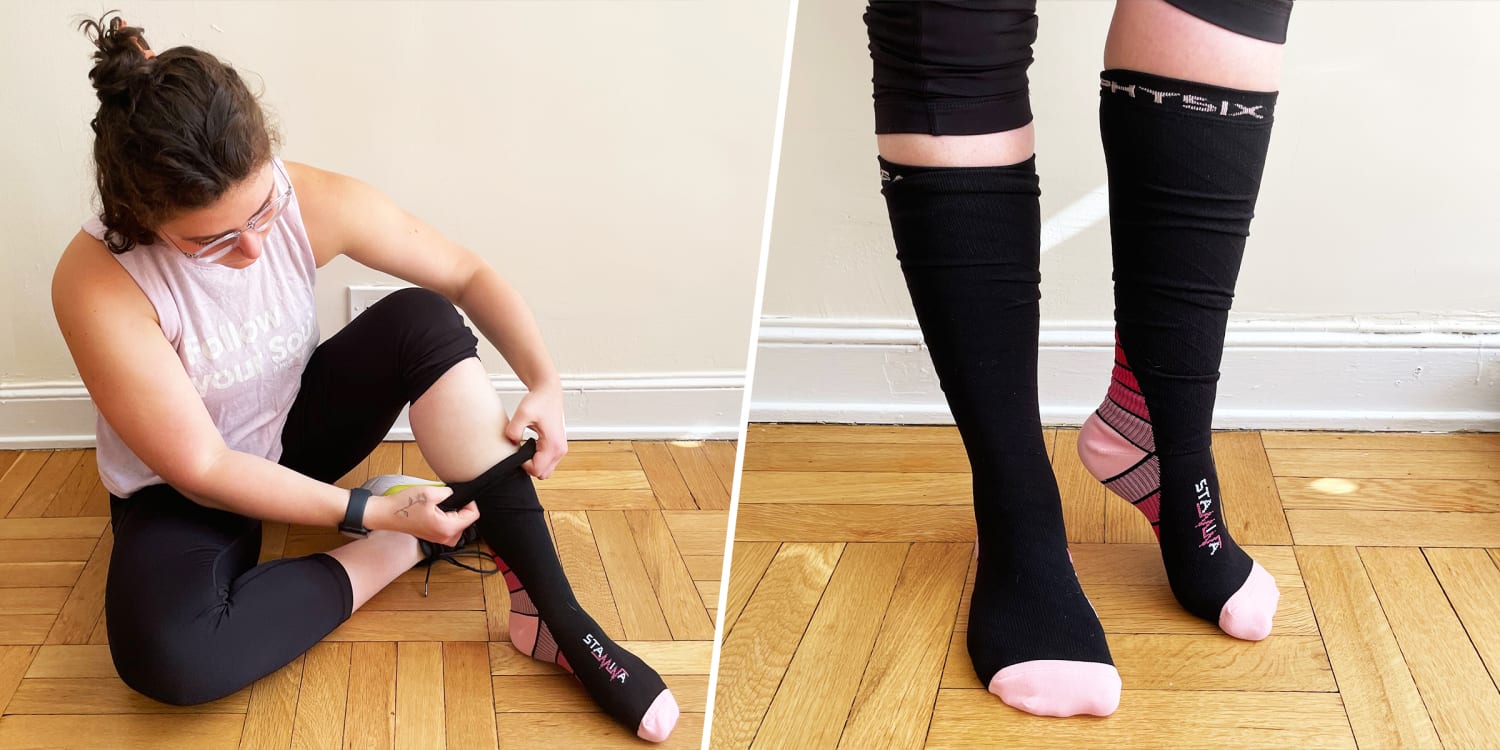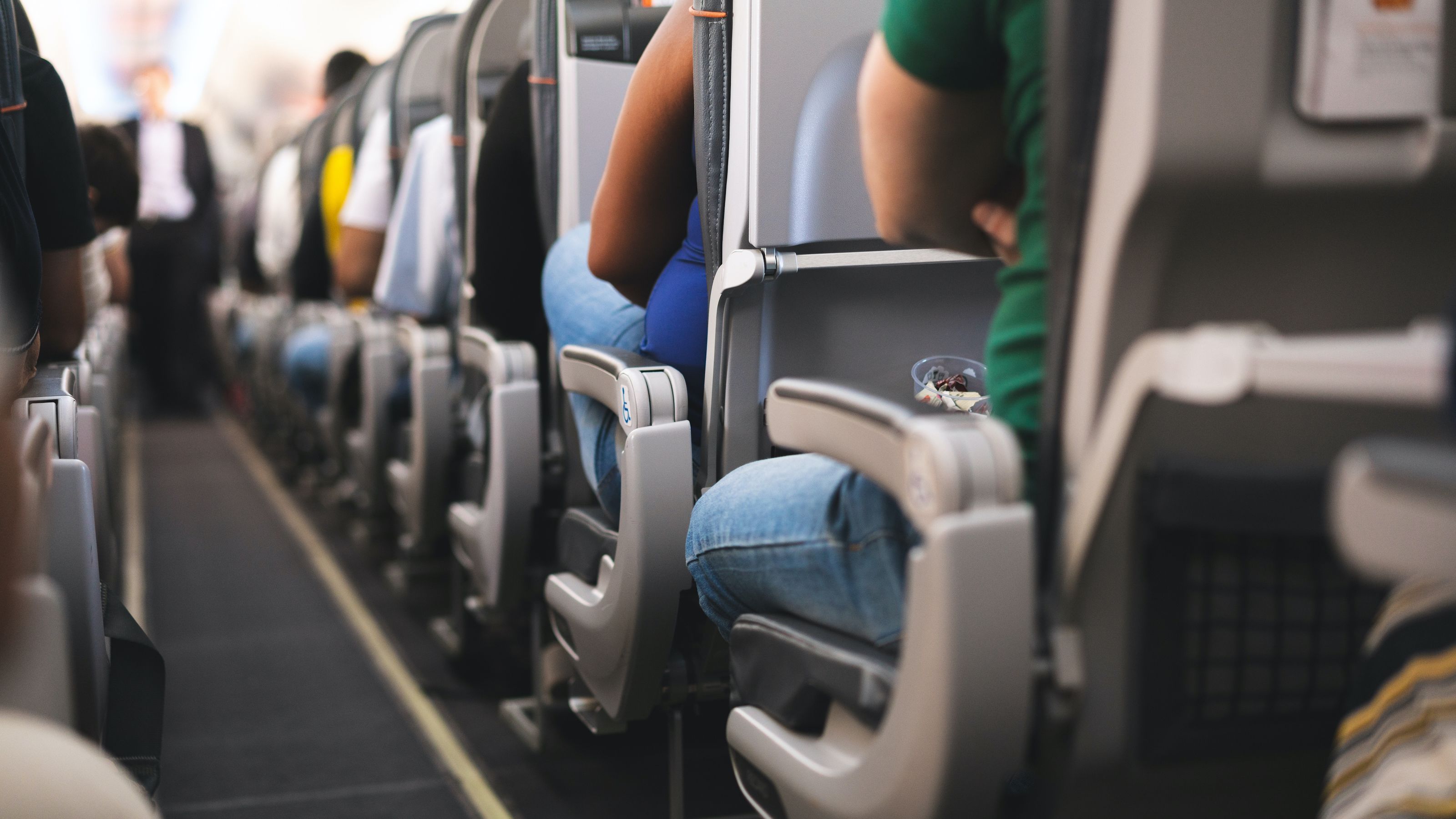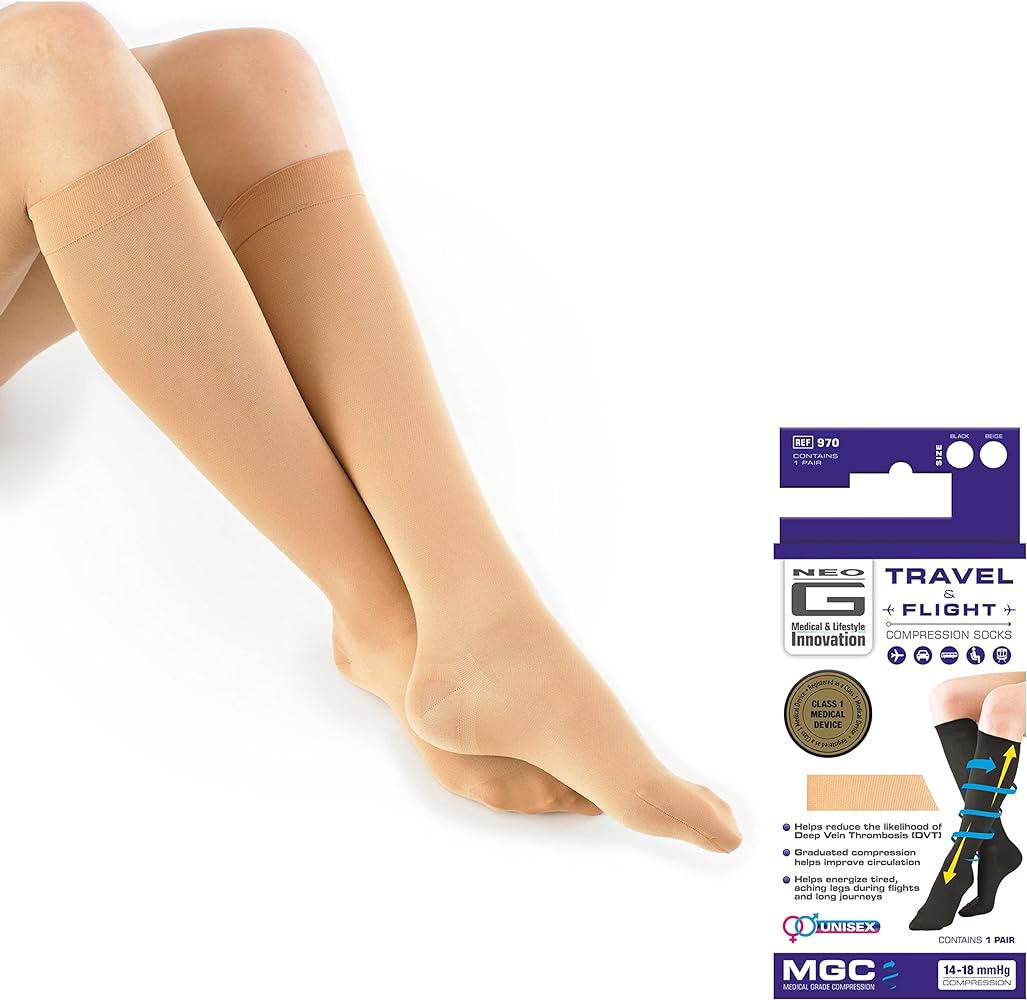Compression socks for travel can help you avoid swelling and leg fatigue on long flights by stimulating circulation in the lower half of your body, which is especially beneficial during extended periods of sitting. They are known to prevent blood clots, a common concern when traveling by air.
Wearing compression socks while flying is becoming increasingly popular as a method to prevent post-flight swelling and fatigue. They promote improved blood flow in the legs, keeping blood moving and reducing swelling. Compression socks should feel comfortable, like a gentle hug to your legs, with graduated compression that is tightest at the ankle and gradually gets looser.
Overall, compression socks are an excellent tool to combat the negative effects of long flights on your legs.

Credit: www.today.com
Choosing The Right Compression Socks
Experience relief from swelling and leg fatigue on long flights by choosing the right compression socks. These socks stimulate circulation in the lower half of your body, alleviating discomfort and preventing blood clots. Say goodbye to tired legs with compression socks for travel.
Understanding Compression Levels
When it comes to choosing the right compression socks for travel, understanding compression levels is essential. Compression levels are measured in millimeters of mercury (mmHg) and indicate the amount of pressure the socks apply to your legs. The most common compression levels for travel socks range from 15-20 mmHg to 20-30 mmHg, with higher levels offering more compression. It’s recommended to consult your doctor or healthcare professional to determine the right compression level for you based on your individual needs and any existing medical conditions or concerns.Finding The Right Fit
Finding the right fit is crucial for optimizing the benefits of compression socks during travel. Ill-fitting socks can be uncomfortable and may not provide the desired compression. To find the right fit, measure the circumference of your calf and ankle to choose the appropriate size. Refer to the sizing chart provided by the sock manufacturer to ensure an accurate fit. Keep in mind that each brand may have slightly different sizing guidelines, so it’s important to follow the specific instructions of the brand you choose. Additionally, consider the length of the socks to ensure they cover the entire calf for maximum effectiveness.Materials And Features To Look For
When selecting compression socks for travel, it’s important to consider the materials and features that can enhance comfort and functionality. Look for socks made from breathable, moisture-wicking fabrics such as nylon or polyester blends, as these materials help to keep your feet dry and prevent odors. Many compression socks also feature additional padding and cushioning in high impact areas, such as the heel and ball of the foot, to provide extra support and alleviate discomfort. Furthermore, some socks offer graduated compression, meaning the pressure is highest at the ankle and gradually decreases as it goes up the leg. This design aids in promoting proper blood circulation and preventing swelling and fatigue. Lastly, consider features such as reinforced seams and a seamless toe, to minimize friction and irritation during long flights.
Credit: www.amazon.com
Tips For Wearing Compression Socks During Travel
When it comes to long flights, compression socks can be your best companion. These socks are specially designed to reduce swelling and leg fatigue, making your travel experience more comfortable and safer. Here are some tips to help you make the most out of wearing compression socks during your journey:
When To Put On Compression Socks
It’s essential to put on your compression socks before you embark on your flight. Start by wearing them right before you leave your home or hotel. By doing this, you can ensure that your legs are adequately supported from the beginning of your journey. Don’t wait until you’re at the airport to put them on, as it can be a hassle and may not give you the immediate benefits you seek.
How Long To Wear Compression Socks
When wearing compression socks for travel, it’s crucial to keep them on for the entire duration of your flight. These socks work by exerting pressure on your legs, promoting blood circulation and preventing swelling. To reap the full benefits, avoid taking them off during the flight whenever possible. However, for long-haul flights, it’s recommended to take short breaks, preferably every two hours, to stretch your legs and promote blood flow.
Additional Tips For Comfort
In addition to wearing compression socks, there are a few extra tips that can enhance your overall comfort during travel:
- Stay hydrated: Drinking plenty of water during your flight can help prevent dehydration and reduce the risk of swelling in your legs.
- Wear comfortable clothing: Opt for loose-fitting clothes that don’t restrict blood circulation.
- Exercise your feet and legs: Perform simple exercises like ankle circles, toe curls, and calf stretches while seated to keep your leg muscles active and promote blood flow.
- Elevate your legs: If possible, elevate your legs on a footrest or use a cushion to support your legs and reduce pressure.
By following these tips, you can ensure a more comfortable and enjoyable travel experience. Compression socks are a simple yet effective solution to combat swelling and leg fatigue on long flights. So, don’t forget to pack a pair on your next adventure!

Credit: www.cnn.com
Frequently Asked Questions Of Compression Socks For Travel: How To Avoid Swelling And Leg Fatigue On Long Flights
Is It A Good Idea To Wear Compression Socks On A Long Flight?
Compression socks are a good idea to wear on long flights. They help prevent blood clots by stimulating circulation in the lower half of your body. This is especially beneficial when you’re sitting for extended periods during the flight.
What Level Of Compression Socks Is Best For Air Travel?
For air travel, it is best to wear compression socks with a higher level of compression. These socks help stimulate circulation in the lower half of your body, which is especially important during long flights when you’re sitting for extended periods.
Ensure the socks feel comfortable, providing a gentle hug to your legs, with the tightest compression at the ankle and gradually decreasing pressure as you move up the leg.
When Should I Take Off Compression Socks After Flight?
It is recommended to wait for at least an hour after disembarking from the plane before taking off compression socks after a flight.
How Tight Should Flight Compression Socks Be?
Flight compression socks should feel comfortable and provide a gentle hug to your legs. They should be tightest at the ankle and gradually get looser towards the top. The socks help stimulate circulation in the lower half of your body, which is especially important during long flights when sitting for extended periods.
Conclusion
Wearing compression socks during long flights can significantly help avoid swelling and leg fatigue. These socks work by stimulating circulation and promoting improved blood flow in the lower half of the body. This is especially important when sitting for prolonged periods during air travel.
By providing a gentle, supported feeling and preventing blood clots, compression socks are a must-have accessory for any traveler looking to maintain comfort and reduce the risk of leg-related issues. Consider adding compression socks to your travel essentials for a more pleasant and comfortable flying experience.


